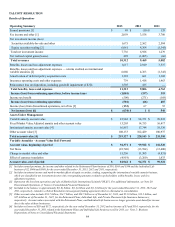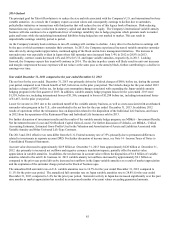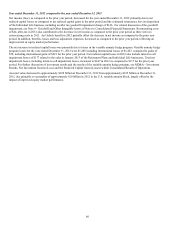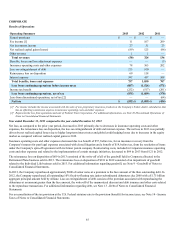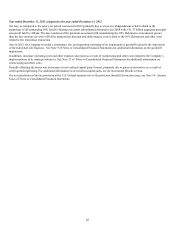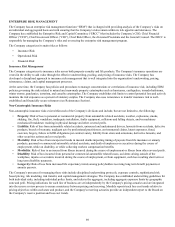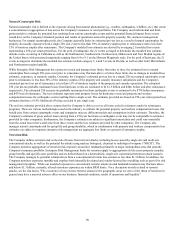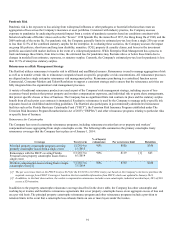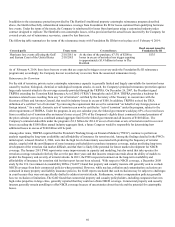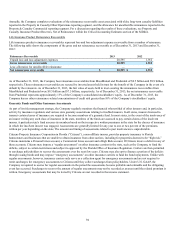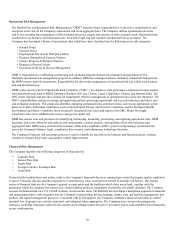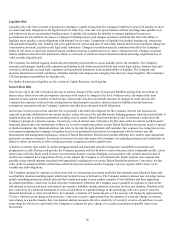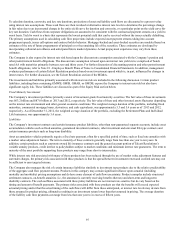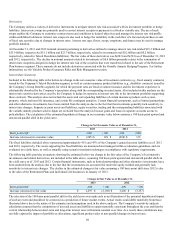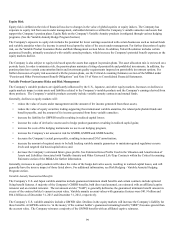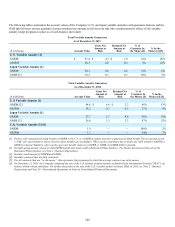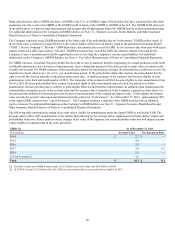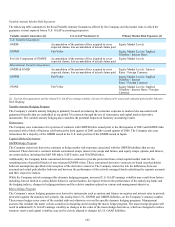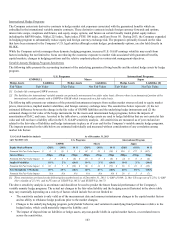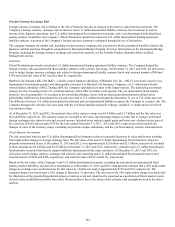The Hartford 2013 Annual Report Download - page 94
Download and view the complete annual report
Please find page 94 of the 2013 The Hartford annual report below. You can navigate through the pages in the report by either clicking on the pages listed below, or by using the keyword search tool below to find specific information within the annual report.
94
Annually, the Company completes evaluations of the reinsurance recoverable asset associated with older, long-term casualty liabilities
reported in the Property & Casualty Other Operations reporting segment, and the allowance for uncollectible reinsurance reported in the
Property & Casualty Commercial reporting segment. For a discussion regarding the results of these evaluations, see Property and
Casualty Insurance Product Reserves, Net of Reinsurance within the Critical Accounting Estimates section of the MD&A.
Life Insurance Product Reinsurance Recoverable
Life insurance product reinsurance recoverables represent loss and loss adjustment expense recoverable from a number of reinsurers.
The following table shows the components of the gross and net reinsurance recoverable as of December 31, 2013 and December 31,
2012:
Reinsurance Recoverable 2013 2012
Unpaid loss and loss adjustment expenses 20,595 1,912
Gross reinsurance recoverable 20,595 1,912
Less: allowance for uncollectible reinsurance — —
Net reinsurance recoverable $ 20,595 $ 1,912
As of December 31, 2013, the Company has reinsurance recoverables from MassMutual and Prudential of $9.5 billion and $9.9 billion,
respectively. These reinsurance recoverables are secured by invested assets held in trust for the benefit of the Company in the event of a
default by the reinsurers. As of December 31, 2013, the fair value of assets held in trust securing the reinsurance recoverables from
MassMutual and Prudential were $9.5 billion and $7.5 billion, respectively. As of December 31, 2013, the net reinsurance recoverable
from Prudential represents approximately 13% of the Company's consolidated stockholders' equity. As of December 31, 2013, the
Company has no other reinsurance-related concentrations of credit risk greater than 10% of the Company’s stockholders’ equity.
Guaranty Funds and Other Insurance Assessments
As part of its risk management strategy, the Company regularly monitors the financial wherewithal of other insurers and, in particular,
activity by insurance regulators and various state guaranty associations relating to troubled insurers. In all states, insurers licensed to
transact certain classes of insurance are required to become members of a guaranty fund. In most states, in the event of the insolvency of
an insurer writing any such class of insurance in the state, members of the funds are assessed to pay certain claims of the insolvent
insurer. A particular state's fund assesses its members based on their respective written premiums in the state for the classes of insurance
in which the insolvent insurer was engaged. Assessments are generally limited for any year to one or two percent of the premiums
written per year depending on the state. The amount and timing of assessments related to past insolvencies is unpredictable.
Citizens Property Insurance Corporation in Florida (“Citizens”), a non-affiliate insurer, provides property insurance to Florida
homeowners and businesses that are unable to obtain insurance from other carriers, including for properties deemed to be “high risk.”
Citizens maintains a Personal Lines account, a Commercial Lines account and a High Risk account. If Citizens incurs a deficit in any of
these accounts, Citizens may impose a “regular assessment” on other insurance carriers in the state, such as the Company, to fund the
deficits, subject to certain restrictions and subject to approval by the Florida Office of Insurance Regulation. Carriers are then permitted
to surcharge policyholders to recover the assessments over the next few years. Citizens may also opt to finance a portion of the deficits
through issuing bonds and may impose “emergency assessments” on other insurance carriers to fund the bond repayments. Unlike with
regular assessments, however, insurance carriers only serve as a collection agent for emergency assessments and are not required to
remit surcharges for emergency assessments to Citizens until they collect surcharges from policyholders. Under U.S. GAAP, the
Company is required to accrue for regular assessments in the period the assessments become probable and estimable and the obligating
event has occurred. Surcharges to recover the amount of regular assessments may not be recorded as an asset until the related premium is
written. Emergency assessments that may be levied by Citizens are not recorded in the income statement.


